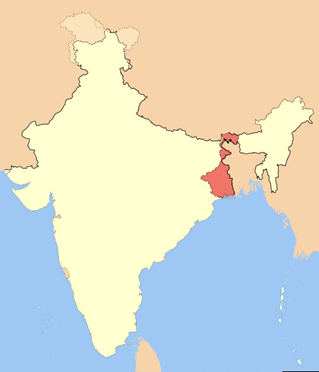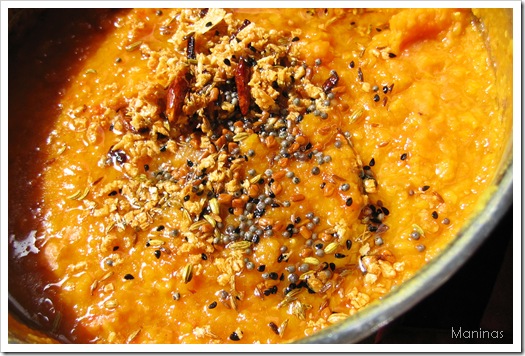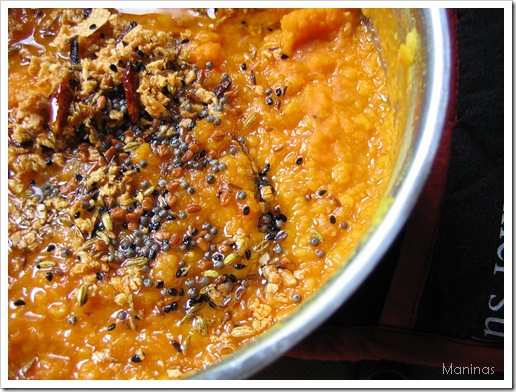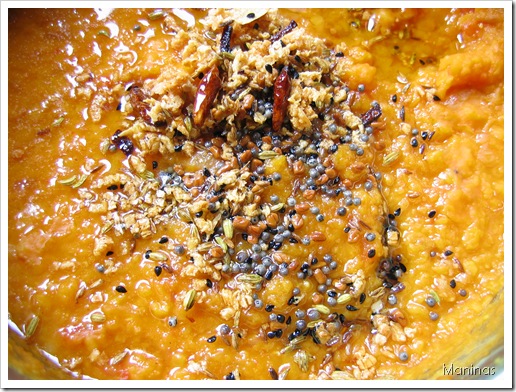Blogging event Regional Cuisines of India (RCI) was started by Lakshmi of Veggie Cuisine, to celebrate the rich and diverse cuisines of India, and is hosted by a different blogger each month. I think this event is a fantastic idea, because not only does it encourage us to explore the many varieties of regional Indian food, but the round-ups also provide excellent resources of information and recipes! For this reason, I’ve decided to dedicate a page to it that contains round-ups of past events, and RCIs that are yet to come, so that I can find it and refer to it easily!
This month, we are exploring the cuisine of West Bengal, and our host is Sandeepa from Bong Mom’s Cookbook.
Food is very important to Bengalis. Traditional feasts are carefully structured rituals consisting of numerous dishes, carefully and laboriously prepared, with different structures and tastes playing an important part of the meal. Such feasts are always finished off with a sweat, usually based on milk and cream, for which Bengal is famous all over India. Fish (both freshwater and sea fish) and rice are the main staples of this coastal region nurtured by the Ganges river, and a delicate mixture of sweet and spicy flavours is characteristic of Bengali dishes. Mustard oil is the preferred cooking medium, and mustard seeds and greens are also used. Mustard is indeed one of the 5 ingredients in Panch Phoron, a typically Bengali mix of equal amounts of 5 spices: fennel (saunf), nigella seeds (kalonji), black mustard seeds, cumin seeds (jeera) and fenugreek seeds (methi). Coconuts and ginger are also widely used in Bengali cooking, and a touch of garam masala is often added to the food to enhance its flavours. Other characteristic ingredients include red lentils (massoor dal), moong dal (moong lentils), poppy seed paste (posto), mustard paste and mangoes.
To find out more about Bengali cuisine, please check out this interesting and informative article, as well as the Wikipedia entry on Bengali cuisine, which describes the courses in a typical Bengali meal. For a wealth of mouth-watering Bengali recipes, do check out these two fantastic blogs: Quick Indian Cooking & Bong Mom’s Cookbook!

West Bengal – Wikipedia Commons As my entry, I’ve chosen this gorgeous Bengali dal. I really wanted to make this recipe from Sangeeta’s blog, but then felt a little silly submitting her her own recipe, so I’ve chosen this one, which is similar, and yet different. This recipe features red lentils, or masoor dal, which seems to be a favourite Bengali dal, judging from the recipes I found featuring this pretty little lentil. Another important characteristics is the use of Panch Phoron. The recipe has three basic steps: the lentils are cooked with turmeric and green chili, and then seasoned with onion, tomato and ginger paste; this is then seasoned with dried chilies, panch phoron and garlic tadka. 
Bengali Red Dal
SOURCE: adapted from this recipe from Rumela’s web
PREPARATION TIME: 5 min
COOKING TIME: 30 – 40 min
CUISINE: Indian – Bengali
SERVES: 3 – 4Ingredients:
1 1/2 cup red lentils
3 1/2 cup water
3 green finger chilies (but see note)
1/2 tsp turmeric, or more to taste
1/2 tsp salt, or to taste
4 tbsp ghee, butter or vegetable oil
1 cup minced onions (1 medium to large onion)
1 cup chopped tomatoes
1 tbsp grated fresh ginger
2 tbsp ghee or vegetable oil
1 tsp panch phoron mix
4 dried small red chilies
3 cloves garlic
1/2 tsp sugar (optional)
Method
1. Rinse lentils well, add water, chilies, turmeric and salt. Bring carefully to boil and cook over low to medium heat, partially covered, for 25 minutes. Cover and cook another 10 minutes. Adjust salt.
You will see the lentils go through various stages during cooking. They will first disintegrate and look like little pieces of peel. At this point, they will still taste slightly raw, and have a particular taste that I associate with raw pulses. After some time, they will disintegrate further into a velvety mush, with an addictive and comforting flavour. I find this irresistible!
2. While lentils are cooking, heat the oil or ghee in a pan. The oil is hot engouh when it starts sizzling when you insert the wooden spoon. Then add the onions and cook until they are golden brown, stirring constantly.
3. Add ginger and stir for 5 seconds. It will stick a little, but don’t worry. You’ll get it off when you add the tomatoes. Add the tomatoes and continue cooking until the tomatoes decompose into a delicious and fragrant mush, and the oil or ghee starts oozing from the mixture. Stir so that tomato mixture doesn’t stick. Turn heat to low if necessary.
4. Scrape out the tomato mixture into the lentils and stir it in. Stir in the sugar if using it. Let lentils sit while you make the spiced oil.
5. Do a quick rinse of the frying pan, without soap, and dry thoroughly, or use another smaller pan if you wish. Add the remaining 2 tbsp of ghee or oil and heat over medium high heat. I recommend using ghee at this stage, for superior flavour.
6. When it is hot, add panch phoron mix and heat until the mustard seeds begin to pop, which will take about 15 – 20 seconds. Mind the splattering! Then, add red chilies and fry for another 15 seconds, until they turn a little darker. Turn off heat and add the crushed garlic and let sizzle for about 30 seconds. Stir this mixture into the lentil/tomato mixture and cover the pan quickly to capture the aromas. Leave for a few minutes, and serve with rice. Adjust salt.

Notes
We didn’t think it was hot enough. Next time, I’ll add either more green chilies, or more dried red chilies at the end. I’ll also try it with or without sugar.
At one point, I thought I used too much turmeric, but I actually liked it the way it was. Red lentils, turmeric and ginger are a fantastic combination!
Verdict
This dal was absolutely gorgeous! We simply loved it! The husband almost liked the pan clean! Yeap, we shall be making this again!
The flavours were fantastic, and came in different layers, corresponding to the three cooking stages (lentils, tomato mixture, tadka). As well as tasting great, it had this amazing orange hue that I really loved, and the house was perfumed by the beautiful aroma of panch phoron.

__________________________________________________________
del.icio.us Tags:
rci bengal,
rci,
regional cuisines of india,
indian food,
dal,
dahl,
masoor dahl,
panch phoron,
food blog,
blogging event,
food,
indian recipes,
indian cuisine,
bengali spices,
bengali dal,
vegetarian,
vegan,
gluten free,
bengali recipesTechnorati Tags:
rci bengal,
rci,
regional cuisines of india,
indian food,
dal,
dahl,
masoor dahl,
panch phoron,
food blog,
blogging event,
food,
indian recipes,
indian cuisine,
bengali spices,
bengali dal,
vegetarian,
vegan,
gluten free,
bengali recipes
Digg Tags:
rci bengal,
rci,
regional cuisines of india,
indian food,
dal,
dahl,
masoor dahl,
panch phoron,
food blog,
blogging event,
food,
indian recipes,
indian cuisine,
bengali spices,
bengali dal,
vegetarian,
vegan,
gluten free,
bengali recipes

















